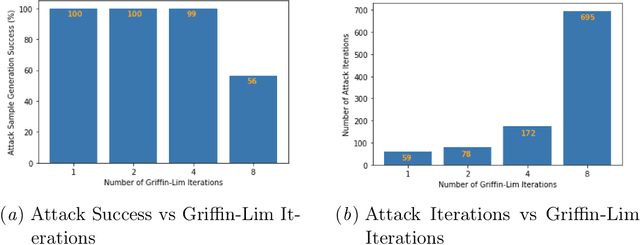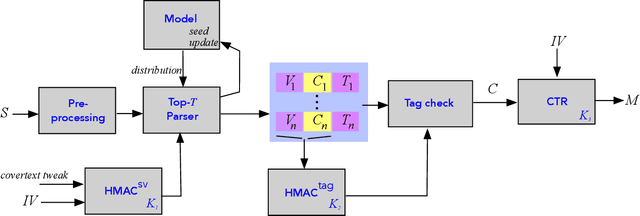Thomas Shrimpton
Beyond $L_p$ clipping: Equalization-based Psychoacoustic Attacks against ASRs
Oct 25, 2021



Abstract:Automatic Speech Recognition (ASR) systems convert speech into text and can be placed into two broad categories: traditional and fully end-to-end. Both types have been shown to be vulnerable to adversarial audio examples that sound benign to the human ear but force the ASR to produce malicious transcriptions. Of these attacks, only the "psychoacoustic" attacks can create examples with relatively imperceptible perturbations, as they leverage the knowledge of the human auditory system. Unfortunately, existing psychoacoustic attacks can only be applied against traditional models, and are obsolete against the newer, fully end-to-end ASRs. In this paper, we propose an equalization-based psychoacoustic attack that can exploit both traditional and fully end-to-end ASRs. We successfully demonstrate our attack against real-world ASRs that include DeepSpeech and Wav2Letter. Moreover, we employ a user study to verify that our method creates low audible distortion. Specifically, 80 of the 100 participants voted in favor of all our attack audio samples as less noisier than the existing state-of-the-art attack. Through this, we demonstrate both types of existing ASR pipelines can be exploited with minimum degradation to attack audio quality.
Covert Message Passing over Public Internet Platforms Using Model-Based Format-Transforming Encryption
Oct 13, 2021



Abstract:We introduce a new type of format-transforming encryption where the format of ciphertexts is implicitly encoded within a machine-learned generative model. Around this primitive, we build a system for covert messaging over large, public internet platforms (e.g., Twitter). Loosely, our system composes an authenticated encryption scheme, with a method for encoding random ciphertext bits into samples from the generative model's family of seed-indexed token-distributions. By fixing a deployment scenario, we are forced to consider system-level and algorithmic solutions to real challenges -- such as receiver-side parsing ambiguities, and the low information-carrying capacity of actual token-distributions -- that were elided in prior work. We use GPT-2 as our generative model so that our system cryptographically transforms plaintext bitstrings into natural-language covertexts suitable for posting to public platforms. We consider adversaries with full view of the internet platform's content, whose goal is to surface posts that are using our system for covert messaging. We carry out a suite of experiments to provide heuristic evidence of security and to explore tradeoffs between operational efficiency and detectability.
 Add to Chrome
Add to Chrome Add to Firefox
Add to Firefox Add to Edge
Add to Edge